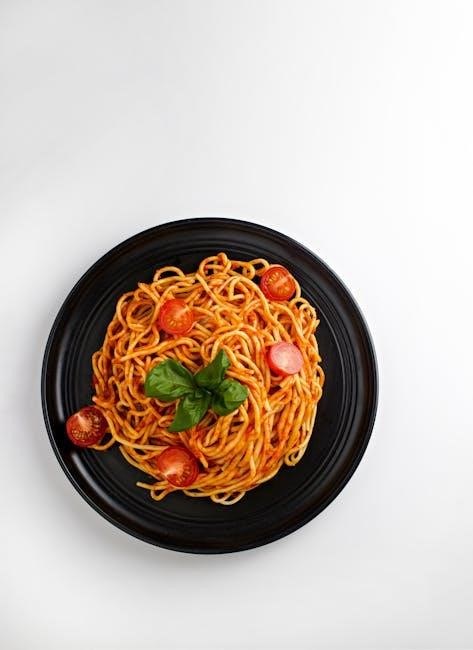E.L. Konigsburg’s timeless tale follows siblings Claudia and Jamie as they escape to the Metropolitan Museum of Art, uncovering secrets and exploring themes of family, art, and adventure.
1.1 Overview of the Book
From the Mixed-Up Files of Mrs. Basil E. Frankweiler is a captivating novel by E.L. Konigsburg that tells the story of two siblings, Claudia and Jamie Kincaid, who run away from home to live in the Metropolitan Museum of Art in New York City. The book is a blend of adventure, mystery, and humor, as the children navigate their new life in the museum, discovering its secrets and uncovering the mystery of a statue linked to the enigmatic Mrs. Basil E. Frankweiler. Through their journey, Claudia and Jamie learn valuable lessons about family, art, and identity. The novel has become a beloved classic, celebrated for its unique narrative style and its ability to inspire curiosity and appreciation for art and history in readers of all ages.

1.2 Author E.L. Konigsburg and Her Writing Style
E.L. Konigsburg, a two-time Newbery Medal winner, crafted From the Mixed-Up Files of Mrs. Basil E. Frankweiler with a unique and engaging narrative style. Her ability to blend humor, adventure, and heartfelt moments captivated readers. Konigsburg’s writing often explored themes of curiosity, rebellion, and self-discovery, resonating with both children and adults. The novel’s narrative is presented through the voice of Mrs. Basil E. Frankweiler, an elderly art collector, adding a layer of mystery and sophistication. Konigsburg’s use of letters and documentation within the story further enhances its authenticity. Her work is celebrated for its ability to inspire a love for art and history while delving into the complexities of family dynamics. This distinctive approach has made her one of the most beloved authors of children’s literature, ensuring her stories endure across generations.
1.3 The Newbery Medal and Its Significance
The Newbery Medal, one of the most prestigious honors in children’s literature, was awarded to From the Mixed-Up Files of Mrs. Basil E. Frankweiler in 1968. This recognition underscores the novel’s enduring impact and literary excellence. Established in 1922, the Newbery Medal is given annually to the most distinguished American children’s book, as voted by the Association for Library Service to Children. Winning this medal significantly boosted the book’s popularity and solidified its place in educational curricula. The award highlights Konigsburg’s masterful storytelling and her ability to create characters and narratives that resonate deeply with readers. The Newbery Medal not only celebrates literary merit but also ensures that outstanding works like From the Mixed-Up Files remain accessible and cherished for future generations. This honor is a testament to the book’s timeless appeal and educational value.

Plot Summary
Claudia and Jamie Kincaid run away to the Metropolitan Museum of Art, where they uncover a mystery surrounding a statue linked to Mrs. Basil E. Frankweiler.
2.1 The Protagonists: Claudia and Jamie Kincaid
Claudia, a methodical and disciplined 12-year-old, and her younger brother Jamie, a carefree and resourceful 9-year-old, embark on an extraordinary adventure. Claudia, feeling overlooked at home, devises a plan to run away to the Metropolitan Museum of Art, dragging Jamie into the escapade. Her organizational skills and determination contrast with Jamie’s more spontaneous nature, creating a dynamic duo. While Claudia seeks elegance and refinement, Jamie is practical and focused on their survival. Together, they navigate the museum’s hidden corners, uncovering secrets and learning about art and history. Their journey is not just a rebellion but a quest for understanding and belonging. Through their experiences, they grow closer, discovering the value of family and the thrill of adventure. Their story becomes a testament to sibling bonds and the power of curiosity.
2.2 Motivation for Running Away
Claudia’s decision to run away stems from feeling underappreciated and overlooked in her family. She yearns for excitement and recognition, which she believes her ordinary home life lacks. Unlike traditional runaways, Claudia meticulously plans their escape, choosing the Metropolitan Museum of Art as their refuge. This choice reflects her desire for elegance and refinement, aspects she feels missing at home. Jamie joins reluctantly, mainly to support his sister, but soon finds himself engrossed in the adventure. Their departure is not just a rebellion but a quest for experiences that challenge and fulfill them. This motivation drives the siblings to explore the museum’s secrets, uncovering not only art but also personal growth and a deeper understanding of family dynamics. Their journey becomes a blend of rebellion, discovery, and ultimately, a return home with newfound appreciation.
2.3 Life in the Metropolitan Museum of Art
Claudia and Jamie’s adventure in the Metropolitan Museum of Art is filled with excitement and discovery. They cleverly evade security guards, finding creative ways to hide and sleep in the museum’s grand spaces. The siblings embrace the museum’s beauty, immersing themselves in art and history. Their days are spent exploring exhibits, while nights are dedicated to finding comfort in hidden corners. The museum becomes their temporary home, offering a unique blend of adventure and learning. Their experiences shape their understanding of art and history, making their time in the museum unforgettable. This chapter of their journey highlights their resourcefulness and curiosity, setting the stage for the mysterious events that follow. The museum’s vast collection and secrets provide the perfect backdrop for their growth and exploration. Their time there is a defining part of their adventure.
2.4 The Mystery of the Statue
The mystery of the statue becomes a central plot point in Claudia and Jamie’s adventure. The siblings discover a beautiful, unnamed marble statue in the museum, whose origins are unclear. Intrigued, they decide to uncover its secrets, leading them to research and investigate. Their efforts reveal that the statue may be the work of a famous artist, sparking curiosity and excitement. The statue’s enigmatic past not only deepens the siblings’ connection to the museum but also leads them to interact with Mrs. Basil E. Frankweiler, the eccentric art collector. The statue’s mystery drives the plot forward, showcasing the children’s problem-solving skills and their growing appreciation for art. This pivotal element ties together themes of discovery, history, and the allure of the unknown. The resolution of the mystery is both surprising and satisfying, leaving a lasting impact on the story.
Themes Explored in the Book
The book delves into themes of family dynamics, rebellion, adventure, and art appreciation, weaving them into a narrative that explores curiosity, growth, and the joy of discovery;
3.1 Family Dynamics and Rebellion
Claudia and Jamie’s decision to run away reflects their desire for independence and understanding within their family. Claudia, feeling overlooked, seeks to prove her worth, while Jamie joins to support her. Their rebellion, though unconventional, highlights the challenges of sibling relationships and the need for recognition. The narrative explores how family dynamics shape their motivations, ultimately leading to growth and a deeper understanding of home life. Through their adventure, Konigsburg subtly examines the tensions and bonds within families, showing how rebellion can sometimes clarify one’s place within them. This theme resonates with readers, offering insights into the complexities of family life and the importance of communication.
3.2 Adventure and Exploration
Claudia and Jamie’s journey is a vibrant tale of adventure and discovery. By running away to the Metropolitan Museum of Art, they embark on a thrilling exploration of art, history, and self-discovery. The museum becomes their playground, where they uncover hidden wonders and learn to navigate its secrets. Their adventures include sleeping in a 16th-century bed, decoding mysterious clues, and unraveling the enigma of a statue. Through these experiences, Konigsburg highlights the joy of exploration and the transformative power of curiosity. The siblings’ escapades not only entertain but also inspire a deeper appreciation for art and history. Their adventure is a celebration of independence, creativity, and the boundless possibilities of discovery, making the story a timeless ode to the spirit of exploration and growth.
3.3 Art Appreciation and History
The book is a celebration of art appreciation and history, set against the backdrop of the Metropolitan Museum of Art. Claudia and Jamie’s adventures highlight the museum’s treasures, sparking curiosity about the stories behind each piece. The mysterious statue attributed to Michelangelo becomes a focal point, blending art history with intrigue. Konigsburg weaves historical facts and fictional elements seamlessly, making art accessible and engaging for young readers. The novel encourages an appreciation for the cultural significance of art and its ability to connect people across time. Through their experiences, the siblings—and readers—learn to see art not just as objects, but as windows into history and human creativity. This theme underscores the enduring value of art and history in shaping our understanding of the world.

Author Background
E.L. Konigsburg, a two-time Newbery Medal winner, crafted stories blending art, history, and family dynamics. Her unique narrative style and inspiration from real-life art mysteries shaped her writing, creating timeless tales.
4.1 E.L. Konigsburg’s Inspirations and Influences
E.L. Konigsburg’s inspirations for From the Mixed-Up Files of Mrs. Basil E. Frankweiler stemmed from her passion for art and history. Growing up in a family that valued education and creativity, she often drew from real-life art mysteries and her own experiences as a teacher. Konigsburg was particularly fascinated by the stories behind famous artworks, which influenced her creation of the enigmatic Mrs. Frankweiler. Her unique narrative style, blending humor and intellect, was shaped by her love of storytelling and her ability to connect with young readers. These influences not only crafted a memorable tale but also inspired a generation to explore art and history with curiosity and wonder.

4.2 The Creation of Mrs. Basil E. Frankweiler
Mrs. Basil E. Frankweiler, the enigmatic art collector, was crafted by E.L. Konigsburg to serve as both a mentor and a mystery. Her character was inspired by the intrigue surrounding art history and the idea of a woman who collects not just objects, but stories and secrets. Konigsburg envisioned Mrs. Frankweiler as a sophisticated yet approachable figure, whose letter to Claudia and Jamie becomes a pivotal element in the plot. The character’s depth was influenced by Konigsburg’s own fascination with art and her desire to create a role model who challenges the protagonists to think critically. Mrs. Frankweiler’s role as a narrator and guide adds layers to the story, blending humor, wisdom, and a touch of elegance, making her an unforgettable part of the tale.

Narrative Style and Structure
E.L. Konigsburg’s unique narrative voice blends elegance and humor, using Mrs. Frankweiler’s letter to guide the story, creating a captivating and memorable tale of adventure and discovery.
5.1 The Unique Narrative Voice
The narrative voice in From the Mixed-Up Files of Mrs. Basil E. Frankweiler is distinct and engaging, blending humor, elegance, and a touch of mystery. The story is presented through the perspective of Mrs. Basil E. Frankweiler, an elderly art collector, who recounts the adventures of Claudia and Jamie Kincaid. This unconventional narrative approach adds depth and charm, as Mrs. Frankweiler’s voice provides both insight and wit. Her observations guide readers through the siblings’ journey, offering a unique lens to explore themes of rebellion, art, and family dynamics. Konigsburg’s use of a third-party narrator creates a sense of intimacy and authority, making the tale both memorable and impactful. The voice also reflects Mrs. Frankweiler’s sophistication and wisdom, enhancing the story’s emotional resonance and intellectual appeal. This narrative style is a key element that sets the book apart and captivates readers of all ages.

5.2 Use of Letters and Documentation
The novel incorporates letters and documentation to enhance its narrative structure and authenticity. Mrs. Basil E. Frankweiler’s letter to her attorney serves as a framing device, revealing the story of Claudia and Jamie’s adventure. This epistolary format adds a layer of intimacy and immediacy, as readers experience the tale through written accounts. The inclusion of letters, notes, and other documents, such as the children’s plans and Mrs. Frankweiler’s observations, provides insight into their thoughts and motivations. This unique approach allows Konigsburg to blend fiction with realistic elements, making the story more engaging. The use of documentation also highlights the themes of secrecy and discovery, as the characters’ actions are pieced together through these written records. This stylistic choice enriches the storytelling, offering a fresh perspective on the adventures and emotional journeys of the characters. It also underscores the importance of communication and the power of words in shaping understanding.

Impact and Legacy
From the Mixed-Up Files of Mrs. Basil E. Frankweiler has inspired curiosity for art and history, earning a Newbery Medal and becoming a timeless classic, appealing to generations with its unique narrative voice and memorable characters like Claudia and Jamie, while its themes of adventure and family continue to resonate widely.
6.1 Popularity and Critical Acclaim
From the Mixed-Up Files of Mrs. Basil E. Frankweiler has garnered widespread acclaim since its publication in 1967. The novel won the prestigious Newbery Medal in 1968, solidifying its place in children’s literature. Its unique blend of adventure, humor, and art appreciation resonated with readers of all ages. Critics praised E.L. Konigsburg’s clever storytelling and the memorable characters of Claudia and Jamie, whose escapades in the Metropolitan Museum of Art captivated audiences. The book’s timeless themes of curiosity, rebellion, and family dynamics have made it a beloved classic. Its popularity endures, with educators and readers alike celebrating its ability to inspire a love for history and art. The novel’s enduring appeal lies in its ability to balance lighthearted fun with deeper reflections on growing up and self-discovery.
6.2 Adaptations and Interpretations
From the Mixed-Up Files of Mrs. Basil E. Frankweiler has inspired various adaptations, including a 1973 film adaptation and a musical play. These interpretations capture the essence of Claudia and Jamie’s adventures while offering fresh perspectives. The book’s timeless themes have also led to educational resources, such as study guides and teacher manuals, designed to deepen understanding. Fans and educators alike continue to explore the story through creative projects and discussions. The novel’s adaptability highlights its enduring relevance, making it a cherished work across generations.
6.3 Educational Use and Study Guides

The book has become a staple in educational settings, with numerous study guides and resources available to enhance comprehension. Teachers and students benefit from reading comprehension tests, vocabulary exercises, and cross-curricular activities. These tools encourage critical thinking and deepen understanding of themes like family dynamics and art appreciation. The story’s relatable characters and engaging plot make it ideal for classroom discussions. Many educators use the novel to teach literary analysis, while its historical and artistic elements integrate seamlessly with other subjects. Study guides often include chapter summaries, discussion questions, and creative projects, catering to diverse learning styles. The availability of digital resources, such as printable worksheets and online quizzes, further supports educational use. This timeless tale continues to inspire young readers and educators alike, making it a valuable addition to school curricula.
6.4 Cultural Significance and Iconic Status
From the Mixed-Up Files of Mrs. Basil E. Frankweiler holds a revered place in children’s literature, celebrated for its unique blend of art, history, and family themes. The book’s iconic status is evident in its enduring popularity and adaptations into films, plays, and educational resources. Its Newbery Medal win in 1968 solidified its cultural significance, making it a benchmark for storytelling. The tale of Claudia and Jamie’s adventures in the Metropolitan Museum of Art has captivated readers for decades, inspiring a love for art and history. The book’s timeless appeal lies in its ability to resonate with both children and adults, fostering curiosity and imagination. As a cultural icon, it continues to be widely studied and cherished, leaving a lasting legacy in literature and education.
Claudia and Jamie’s adventures in the Metropolitan Museum of Art remain a timeless tale of curiosity, creativity, and family bonds, inspiring readers for generations with its enduring charm and insight.
7.1 Final Thoughts on the Book’s Enduring Appeal

Claudia and Jamie’s journey continues to captivate readers with its blend of adventure, art appreciation, and family dynamics. The story’s themes of curiosity and self-discovery resonate across generations, making it a cherished classic. The unique narrative voice and the enigmatic Mrs. Frankweiler add depth and intrigue, while the setting of the Metropolitan Museum of Art sparks imagination. The book’s ability to balance humor with meaningful lessons ensures its lasting popularity. As a Newbery Medal winner, it remains a cornerstone of children’s literature, inspiring readers to explore their own worlds with wonder and creativity. Its timeless appeal lies in its celebration of individuality and the joy of uncovering life’s hidden treasures.